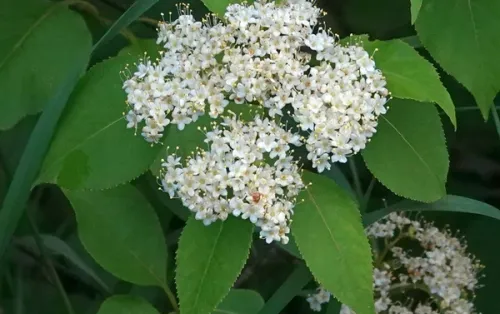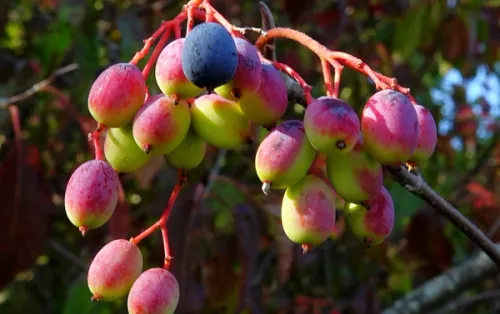Back to Glossary
Nannyberry Viburnum
Viburnum lentago
Nannyberry Viburnum, often referred to simply as Nannyberry, is a large, deciduous shrub or small tree that can grow up to 14 to 16 feet tall. It is noted for its upright and spreading habit, making it suitable as a screen or hedge. In late spring, clusters of creamy white flowers bloom, providing a nectar source for pollinators and a pleasant visual appeal. These flowers mature into deep blue-black berries in the fall, which are edible and highly favored by birds and wildlife. The leaves turn from a rich green to a stunning array of reds and purples in autumn, enhancing its seasonal interest. Nannyberry viburnum thrives in a variety of soil types, prefers full sun to partial shade, and is known for its adaptability to urban environments.
Details
Height180” - 240”
Spread84"
Bloom SeasonMay – May
Soil Types
Clay
Loam
Soil Moisture
Medium
Moist
Sun Exposure
Part Sun
Full Sun
Range Map
Available
Not available
Ecological Benefits
Maintenance Tips
- Moderately drought-tolerant once established; water regularly during dry spells.
- Prune immediately after flowering if shaping is required, as it blooms on old wood.
- Adaptable to a wide range of soil conditions; prefers moist, well-drained soils.
- Apply a layer of organic mulch to conserve soil moisture and suppress weeds.
- Monitor for common viburnum pests like viburnum leaf beetle and diseases such as leaf spot. Manage these through cultural practices or appropriate treatments to maintain plant health.





